|
"Les Ténèbreuses"
I have
called these paintings "Les Ténèbreuses" after the famous
"Maniera Tenebrosa" of Carravaggio (1571-1610). This style of painting, using a single light shining into a dark interior with realistic models
in humble suroundings was introduced by Carravaggio as an earthy antidote to the
mannered vision of the times. In the years following his death, Carravaggio's approach to
painting was widely adopted by artists across Europe. These artists came to be known as
"Caravaggisti", and their style as "tenebroso", or obscure and coming
out of the shadows.
One could say this series of nudes was born in 1990, when I was working
on still life paintings to familiarize myself more thoroughly with the expressive
qualities of light and brushwork. As an experiment I painted, , "Desolation"
using a small, dark polaroid photo as a reference. The portraits I worked on
in 1997 got me fascinated with the work of Rembrandt and Caravaggio. A trip to the Louvre in Paris also re-kindled an interest in the
followers of Caravaggio in France known as the "Carravaggisti Francese". A
painting of the Dead Christ by Philippe de Champaigne (1602-1674) was especially
memorable.
In the Louvre's bookstore I found a book on 19th century art photography
which included photographs commissioned by Eugene Delacroix(1798-1863), Edgar
Degas(1834-1914) and scores of Academicians eager to embrace this new technology. Although
skeptical of using photography as a resource, for the dramatic poses I had envisioned,
it's use was indispensable. I took many dark and fuzzy polaroid photos, consulting them
now and then during the progress of the paintings. The small theatre created by the red
drapes, and the addition of props such as the anamorphic lens and the rubber cap also
increase the surreal sense of drama.
In the final painting of this series, A Mirror in Which to Dwell, I
posed the model, (myself), peering into a small mirror. Innuendos of narcissism aside, the
symbolism here points to the raison d'etre of all self portraits, the search for truth
within. The title is from the poem "Insomnia", by Elizabeth Bishop (1911-1979).
The moon in the bureau
mirror
looks out a million miles
(and perhaps with pride, at herself
but she never, never smiles)
far and away beyond sleep, or
perhaps she's a daytime sleeper.
By the Universe deserted,
she'd tell it to go to hell
and she'd find a body of water,
or a mirror on which to dwell.
(excerpt).
Elsie Russell, August 2000,
Brooklyn, NY
|
|
 |
|
Torque |
| 1998, oil on linen, 40" x 18" |
|
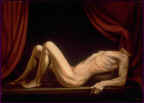 |
|
Aigu Sketch |
| 1998, oil on linen, 15" x 21" |
|
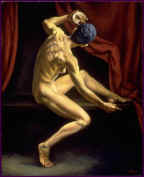 |
|
A Mirror in Which to Dwell Sketch |
| 1998, oil on linen, 17" x 21" |
|
|
 |
|
A Mirror in Which to Dwell |
| 1999, oil on linen, 56" x 44" |
|
 |
|
Amplified Song Sketch |
| 1999, oil on linen, 19" x 21" |
|
 |
|
Anime |
| 1998, oil on linen, 30" x 54" |
|
|
 |
|
Anime Sketch |
| 1998, oil on linen, 18" x 10" |
|
 |
|
Epiphanic |
| 1998, oil on linen, 40" x 30" |
|
 |
|
Epiphanic Sketch |
| 1998, oil on linen, 18" x 12" |
|
|
 |
|
Lucidity |
| 1997, oil on linen, 48" x 30" |
|
 |
|
Lucidity Sketch |
| 1998, oil on linen, 16" x 10" |
|
 |
|
Mountain |
| 1998, oil on linen, 16" x 12" |
|
|
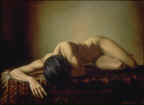 |
|
Over the Edge |
| 1997, oil on linen, 40" x 30" |
|
 |
|
Over the Edge Sketch |
| 1998, oil on linen, 18" x 8" |
|
 |
|
Pivot |
| 1998, oil on linen, 40" x 28" |
|
|
 |
|
Pivot Sketch |
| 1998, oil on linen, 15" x 9" |
|
 |
|
Somnolence |
| 1998, oil on linen, 12" x 9" |
|
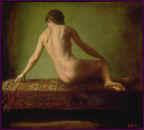 |
|
Tent Sketch |
| 1998, oil on linen, 12" x 11" |
|
|
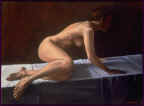 |
|
The Unknown |
| 1998, oil on linen, 40" x 30" |
|
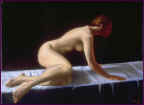 |
|
The Unknown Sketch |
| 1998, oil on linen, 16" x 12" |
|
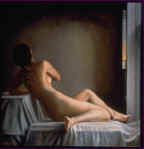 |
|
Twilight |
| 1997, oil on linen, 35" x 36" |
|
|
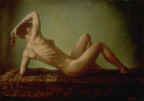 |
|
Torque Sketch |
| 1998, oil on linen, 14" x 10" |
|
 |
|
Wolf Sketch |
| 1998, oil on linen, 8" x 16" |
|